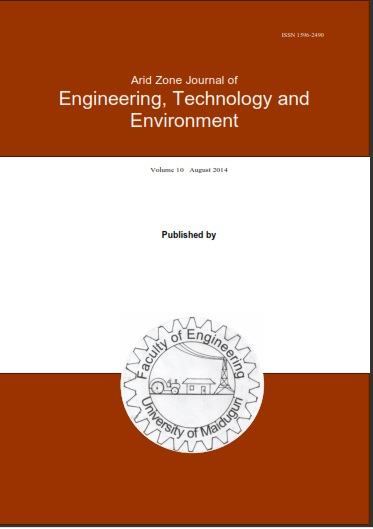Abstract
Tannery waste waters are very complex and characterized by high content of organic, inorganic and nitrogenous compounds which include heavy metals. In this study, the adsorption Isotherm and kinetics of a composite adsorbent produced from the chemical activation of groundnut shell and rice husk were utilized as agricultural waste in the removal of Pb, Cr and Cd from tannery effluent. The experimental data were fitted to Langmuir, Freundlinch and Temkin isotherms, while the kinetics were studied using Pseudo-First-Order and Pseudo-Second-Order kinetic models. The results revealed that Langmuir isotherm model showed excellent fit to the experimental data for all the heavy metal adsorption onto Groundnut shell activated carbon (GR-AC). This can be seen from the high correlation coefficients R2. The Langmuir monolayer adsorption capacity (qm) value was found to be 9.81 mg/g (Pb), 5.72 mg/g (Cr) and 4.25 mg/g (Cd) respectively. The equilibrium adsorption capacity (qe) values calculated from the Second Order kinetics model agreed well with the experimental values for Pb and Cd. In addition, the First Order Kinetic rate constant decreased with increase in initial metal ion concentration. The excellent correlation between the calculated qe and experimental qe values and higher regression coefficient R2 shows clearly that the adsorption of these heavy metals onto GR-AC followed Pseudo-Second-Order kinetic model. Therefore, groundnut shell and rice husk can effectively be utilized as agricultural waste to produce a composite adsorbent to remove Pb, Cr and Cd from tannery effluent.
Copyright of the paper named above is hereby assigned and transferred to the Arid Zone Journal of Engineering, Technology and Environment published by University of Maiduguri, Nigeria.

